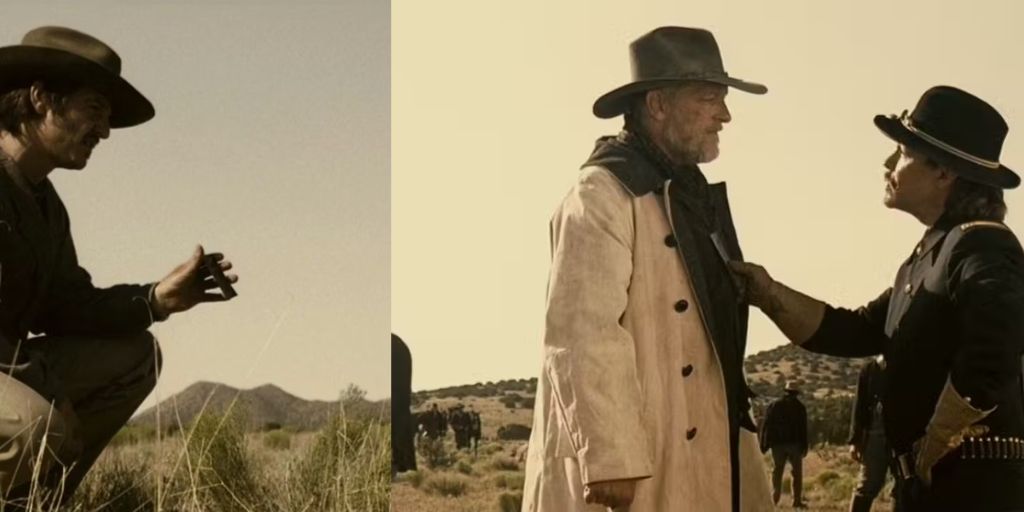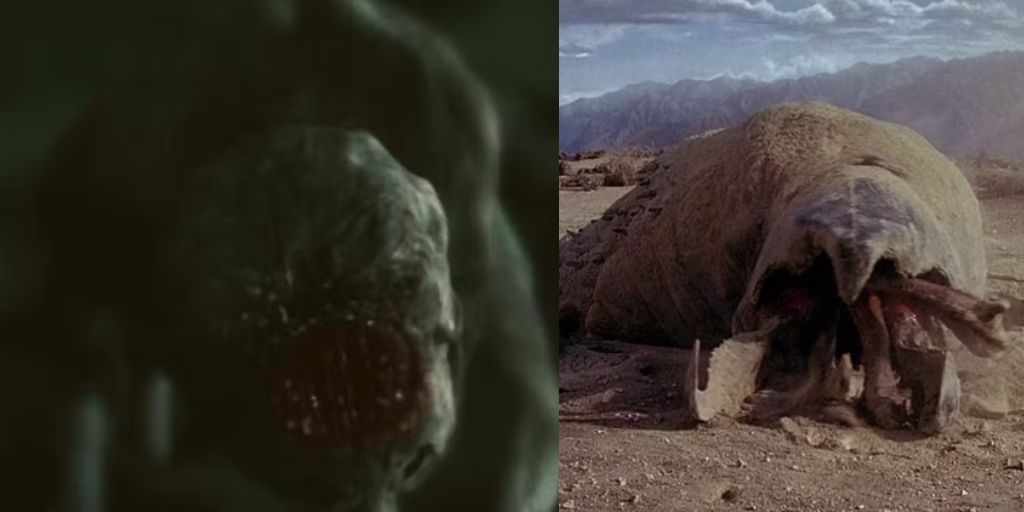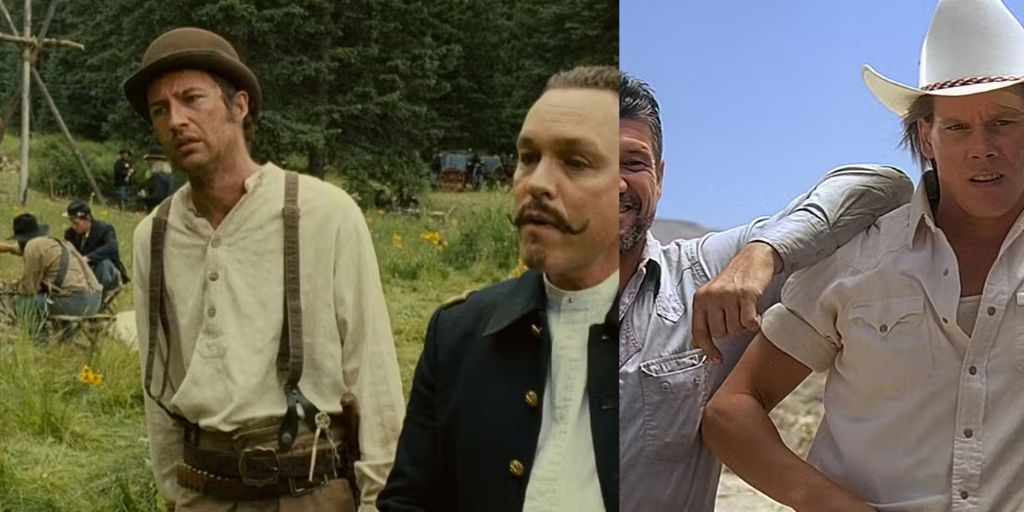Creature Features, a subgenre of horror, often reflect the fears of the time they are made. One clear example is Godzilla, which was created in Japan after the nuclear attacks by America. The movie’s giant, radiation-consuming monster clearly represents the fear Japanese people had of nuclear war.
In the 2008 movie The Burrowers, the horror shifts to the American frontier in 1879. Directed and written by J.T. Petty and starring Clancy Brown, William Mapother, Laura Leighton, Karl Geary, and Alexandra Edmo, the movie blends horror and western genres. It highlights the cruelty of colonialism and white supremacy through the characters’ search for missing settlers.
The Settlers’ Hypocrisy in The Burrowers
The main character, Fergus Coffey, an Irish immigrant played by Geary, is searching for his lover’s family after a brutal attack. He assumes the attack was committed by Native Americans and joins a search party of local men and soldiers.
However, the group quickly splits up. Henry Victor, played by Doug Hutchison, leads the military part of the search and tortures an innocent Sioux tribe member. This act of extreme violence disgusts Coffey and his men, causing them to break away from the soldiers.
Although Coffey and his men are repulsed by the torture, they still hold harmful beliefs about Native Americans. They believe the missing women were taken by Native people and fear they will be assaulted if not rescued quickly.
Throughout the movie, the men repeat this idea, justifying their violence toward the Indigenous people they encounter.
Ironically, the missing women were not taken by Native Americans, and the only scene of sexual violence involves a white boy trying to assault a paralyzed girl. The accusations settlers make against Indigenous people reflect their own behavior.
The settlers’ actions bring about their own downfall. They are so blinded by their hatred of Native Americans that they fail to see the true cause of the disappearances. When Victor tortures a Sioux man, the man tells them that the real culprits are creatures known as “the burrowers,” using a word that describes animals.
Coffey and the others recognize the term is not for humans, yet they still assume the man is talking about another tribe. Their refusal to see Native Americans as fully human blinds them to the real danger.
The Burrowers vs. The Monsters of Tremors
The burrowers in the movie are similar to the monsters in another horror-western, Tremors. Both feature underground creatures that hunt humans.

However, while the creatures in Tremors are known as “graboids” and feed only on humans, the burrowers originally fed on buffalo. But due to the near extinction of buffalo by the U.S. government to weaken Indigenous populations, the burrowers now hunt people.
The Burrowers provides a haunting look at the effects of colonialism. The land itself fights back against the colonizers through these monsters. The burrowers don’t eat people immediately like the graboids. Instead, their saliva paralyzes their victims, and they bury them alive, waiting for their bodies to rot before feeding.
This gruesome fate doesn’t just fall on the settlers, though. Indigenous people, too, suffer from the burrowers’ attacks, much like how real-life colonialism harms both the land and its original inhabitants. The only way to defeat these monsters is through Indigenous knowledge, but the settlers refuse to listen.
The Burrowers as a Metaphor for Colonialism
Where Tremors is about a community coming together to defeat a common enemy, The Burrowers shows what happens when people fail to see the humanity in others. In Tremors, the residents of Perfection, Nevada, put aside their differences to fight the graboids.
Even the most gun-loving member of the town, Burt Gummer (played by Michael Gross), helps his neighbors. The characters’ different skills and backgrounds—like Rhonda LeBeck’s geology knowledge and Burt’s weapon expertise—help them defeat the creatures.
In contrast, the settlers in The Burrowers fail because they refuse to treat Indigenous people as equals. If they had accepted help and knowledge from Native Americans, they might have had a chance to defeat the burrowers.
Instead, they are trapped by their own racist views. The movie ends tragically with the last Native person who knows how to kill the burrowers being lynched by a white supremacist.
A Haunting Depiction of the American West
The Burrowers offers a bleak look at the American West. The film’s visuals add to the horror. Wide, open spaces create an unsettling feeling that there’s nowhere to hide from the burrowers.
The night scenes are particularly chilling, as the darkness hides the horrors creeping toward the characters. The tension builds with just enough light to show the audience the danger that’s coming.
On a second viewing, the movie becomes even more frustrating. It’s clear early on that the Native Americans Coffey and his men are hunting aren’t responsible for the disappearances.

Yet, the settlers continue to ignore every clue pointing to the burrowers. The most frightening scenes in the movie aren’t caused by the monsters, but by the settlers themselves. Their violence, greed, and hatred ultimately doom them and leave them at the mercy of the borrowers.
If you’re interested in watching The Burrowers, it’s currently available for streaming on Tubi in the U.S.




